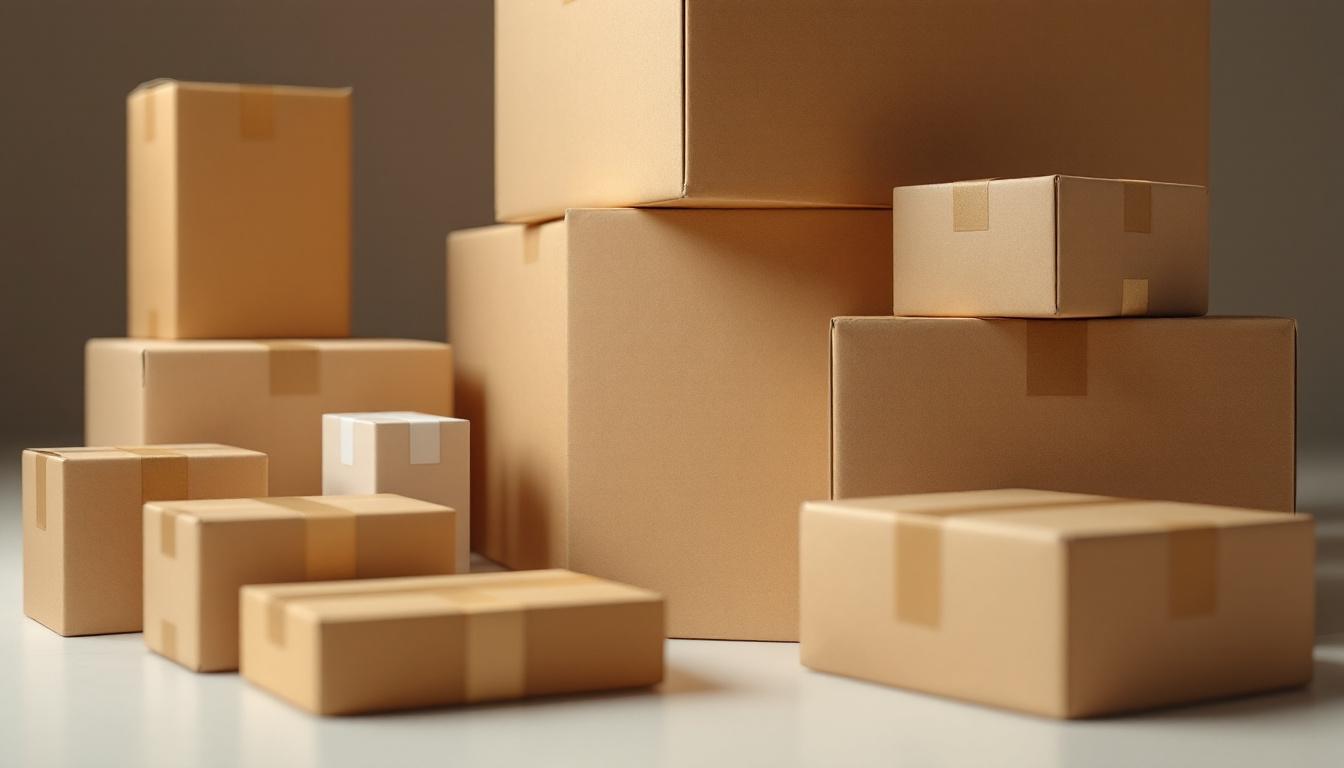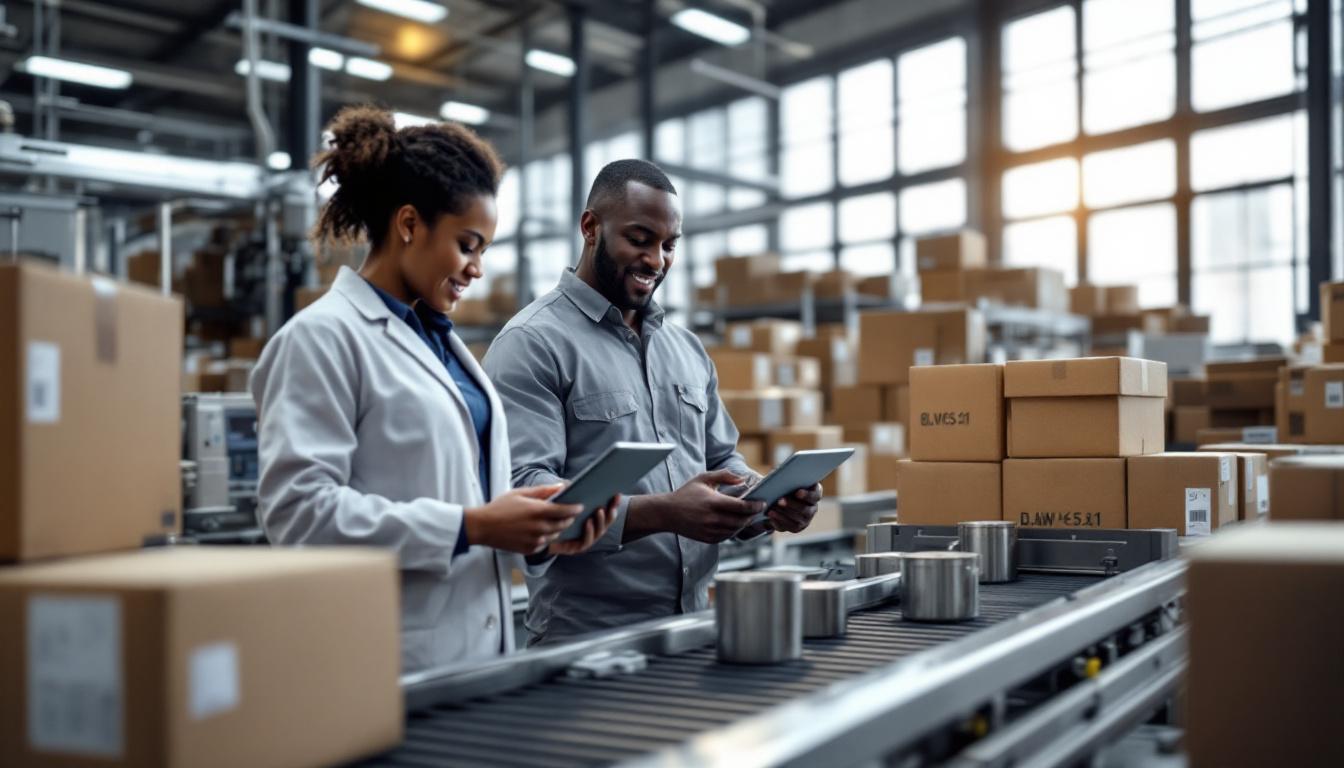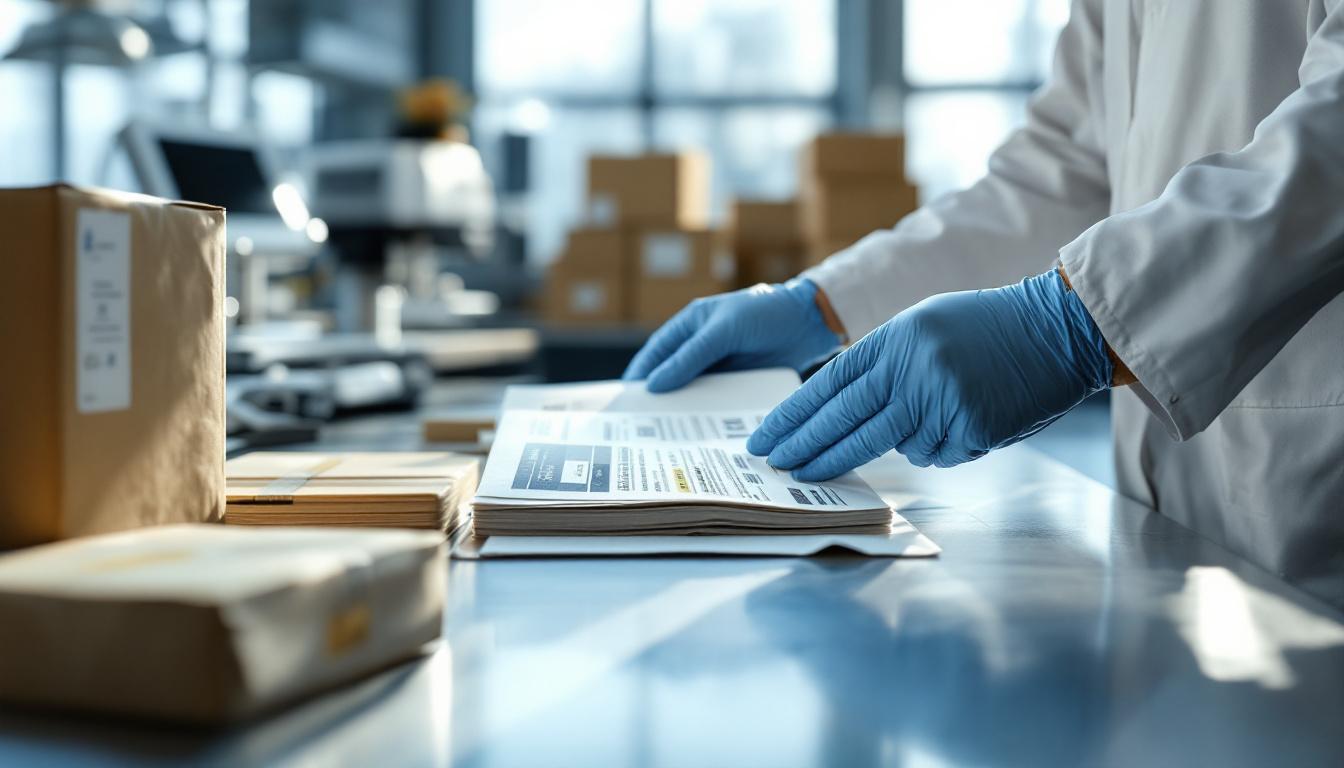![Secondary Packaging Outsourcing: Key Benefits for Modern Manufacturers [2025]](https://msl-indy.com/wp-content/uploads/2025/08/modern-manufacturing-secondary-packaging-robotics.jpg)
Secondary Packaging Outsourcing: Key Benefits for Modern Manufacturers [2025]
Secondary packaging is more than just an extra box or wrapper, it’s a key link between production and retail shelves. Manufacturers rely on this extra layer to protect products during shipping, support branding, and keep items organized for inventory and retail. As demands on the supply chain grow, many companies now turn to outsourcing their secondary packaging to help manage complexity, reduce costs, and improve efficiency.
This shift lets businesses focus on core operations and tap into specialized expertise. By partnering with packaging providers, manufacturers gain access to industry best practices and scalable solutions that keep goods moving smoothly. The decision to outsource is quickly becoming a smart move for those looking to stay flexible and competitive. For an in-depth overview of packaging options and strategies, check out the Different Types of Contract Packaging Services.
What is Secondary Packaging?
Secondary packaging is the layer that comes after primary packaging. It serves to group, protect, and present products once they leave the manufacturer but before they reach store shelves or end-users. If you picture bottled drinks in cardboard carriers or snack packs wrapped together in shrink film, you’re looking right at secondary packaging. This layer is the link between raw product and organized retail display.
Unlike primary packaging, which touches the product directly (think bottles, blister packs, or cans), secondary packaging never makes contact with the contents themselves. Instead, its job is to bundle individual items, make handling easier, and help keep goods safe throughout transport and storage. There’s also a third layer called tertiary packaging, which is usually used for bulk shipping, like pallets wrapped in stretch film ready for trucks.
Let’s break down what secondary packaging does and how it stands apart from the other layers.
Secondary vs. Primary and Tertiary Packaging
It’s helpful to see how these three layers work together:
| Packaging Level | Touches Product? | Main Purpose | Example |
|---|---|---|---|
| Primary | Yes | Protect product, hold contents | Bottle, blister pack, jar |
| Secondary | No | Group and shield multiple units | Carton, shrink wrap, tray |
| Tertiary | No | Bulk transport, logistics efficiency | Pallet, shipping crate, big box |
- Primary packaging is closest to your product. It’s the direct barrier, such as a tube of toothpaste or a soda can.
- Secondary packaging groups several primary units together, making products easier to store, move, count, and sell. It’s what you see when stocking shelves or handling inventory.
- Tertiary packaging bundles many secondary units together for mass shipping. This is mainly for warehouses and transport.
How Secondary Packaging Works
Secondary packaging does more than just keep items together. Here’s how it benefits the supply chain and retail process:
- Protection: It adds a strong buffer against damage, dust, and mishandling during transit.
- Organization: Bundles products into manageable units so warehouses, distributors, and stores can track inventory easily.
- Presentation: Supports shelf-ready displays and helps with branding through printed cartons, branded trays, or wraps.
- Efficiency: Makes handling, picking, and stocking far less labor-intensive, which speeds up delivery from warehouse to shelf.
For companies exploring outsourcing, understanding these functions helps pinpoint the right solutions within contract packaging. Want to see more about how secondary packaging fits into the packaging process? Take a look at this Overview of Secondary Packaging in Contract Packaging, which covers even more about its role and advantages.
Secondary packaging is the workhorse that keeps production lines moving, shelves stocked, and goods ready for customers, all while protecting your product and telling your brand’s story in transit.
Key Business Benefits of Outsourcing Secondary Packaging
Outsourcing secondary packaging brings big advantages to manufacturers looking to simplify operations, lower costs, and stay nimble in a changing market. By handing off packaging tasks to contract experts, you open the door to cost savings, flexibility, and sharper business focus. Here’s how outsourcing secondary packaging delivers real, measurable value.
Lower Costs and Reduced Capital Expense
Keeping secondary packaging in-house often means pricey investments in machinery, warehouse space, and a steady crew of workers. When you outsource, you hand over these responsibilities and shift your dollars from fixed costs (buying and maintaining equipment, hiring long-term staff) to variable costs that align with your actual order volume.
What does this look like in practice?
- No need to buy or maintain expensive packaging machines.
- Less money tied up in warehousing, utilities, and insurance.
- Lower labor spend, as contract packaging partners handle hiring and training.
This model can free up cash flow for other areas of your business. Industry research shows that outsourcing packaging can reduce total packaging costs by up to 30% compared to in-house setups. To see more on this, visit this breakdown of the advantages of contract packaging vs. managing it yourself.
Enhanced Flexibility and Scalability
Today’s markets move fast. Whether launching a product, responding to a promotion, or dealing with seasonal spikes, demand can shift overnight. Contract packaging partners are built for this—they’re designed to flex with your needs, big or small, without missing a beat.
With outsourced support, you can:
- Scale output up or down when demand changes.
- Move quickly on new product launches or marketing campaigns.
- Avoid long-term commitments or overinvesting in unused resources.
By teaming with a partner who specializes in adaptability, your packaging operation stays in sync with your business goals. For a closer look at why flexibility in fulfillment solutions matters, check out this guide.
Resource Optimization and Focus on Core Competencies
Handling secondary packaging in-house can pull your team in too many directions. Outsourcing it clears the way for your people to zero in on what you do best—developing new products, marketing, and growing the business. You let packaging specialists handle logistics, regulations, and equipment.
Benefits for your business include:
- More time for product innovation and customer experience.
- Less distraction for management and operations teams.
- Resources better spent on growth, not daily packaging logistics.
Letting skilled partners manage packaging tasks also lowers the risk of errors, compliance issues, or costly downtime. For more details about how outsourcing logistics allows you to focus on your strengths while still getting efficient service, read this quick overview: Cost Reduction with 3PL Services.
Quality Assurance and Regulatory Compliance in Outsourced Packaging
Clear rules and high standards shape everything about secondary packaging, especially for industries like food and pharmaceuticals. When you outsource secondary packaging, you don’t just save time and money, you tap into up-to-date know-how and tools that reduce risk. Specialized contract packagers take ownership of compliance and are built to catch issues before they become expensive problems. By trusting professionals who watch the details, your business can move much faster while staying confident that every package meets safety and legal requirements.
The Role of Specialized Packaging Partners
When products leave your facility, responsibility doesn’t stop at the warehouse door. Packaging partners bring process control, modern equipment, and regulatory expertise that many businesses can’t match in-house. Reputable contract packagers often use dedicated teams to track quality at each step, monitoring for deviations or hazards in real time.
They invest in:
- Modern machinery and inspection systems that flag problems early
- Routine staff training that keeps workers current on regulations
- Documentation and traceability systems for every lot and batch
Choosing the right partner means you get not only cost savings but confidence. These specialists turn strict packaging standards into a smooth, repeatable process. If you want to learn more about efficiency in this space, check out these efficient contract packaging solutions for current industry insights.
Ensuring Consistency and Safety
Regulated industries require strict attention to quality—one mistake can lead to product recalls or legal trouble. Packaging partners know how to handle these demands and keep your secondary packaging consistent, safe, and audit-ready. They perform regular checks to catch defects like torn film, labeling errors, or contamination.
Key steps that contract packagers take to maintain standards:
- Follow Good Manufacturing Practices (GMP)
- Use checklists and digital controls to validate each shipment
- Isolate and investigate any issues before products leave the building
- Maintain clear records to support any required audits
Outsourcing also helps companies adapt faster when rules change. Seasoned providers keep up with new laws and help you stay ahead, so you don’t have to worry about regulatory surprises.
Meeting Compliance Requirements for Regulated Industries
Industries like pharmaceuticals, medical devices, and food face strict oversight. Secondary packaging here is not just about presentation, it’s about public safety. Regulations can cover lot tracking, tamper evidence, expiration dating, allergen labeling, and more. Contract packagers bring systems that are already built to handle this detail.
You benefit from:
- Pre-validated lines for pharmaceutical compliance
- Systems that support traceability and recall management
- Staff trained to read and follow FDA or USDA requirements
If your secondary packaging needs to meet complex compliance demands, using a partner with a solid track record takes a weight off your shoulders. For an overview of repackaging under regulatory scrutiny, read this detailed Repackaging Services Overview.
Advantages of Third-Party Oversight
Working with a contract packager means regular audits and transparent documentation become routine, not a scramble. They run batch tests, monitor every shift, and deliver data to back up every claim of compliance.
When you consider all this:
- Outsourced secondary packaging brings third-party audits as part of the deal
- Real-time reporting helps spot trends before they affect shipping
- Issues are solved before they ever reach your team or your customers
The expertise of these packaging partners isn’t just nice to have, it is your best safety net in a regulated world. Looking at more benefits? Explore the advantages of contract packing for further evidence of how specialized support translates into safer, smoother operations.
Access to Advanced Technology and Innovation
Outsourcing secondary packaging isn’t just about saving time or money. It’s also the fastest, easiest way for manufacturers to keep up with new packaging technology. Contract packaging partners constantly invest in state-of-the-art equipment, advanced automation, and the latest sustainable materials so you don’t have to tie up capital or chase new trends. That means your business gets all the upside of modern packaging—and the flexibility to stay ahead—without the headaches or overhead.
State-of-the-Art Equipment Without the Price Tag
Buying and maintaining the latest packaging machines is expensive. Many smaller to mid-sized manufacturers can’t justify those big investments, especially for short runs or seasonal products. Outsourcing solves that instantly.
Packaging providers run advanced lines that feature:
- Automated sorting, filling, sealing, and labeling
- High-speed inspection and quality controls
- Equipment configured for a wide variety of packaging formats
You’ll find this high level of precision in everything from shelf-ready boxes to custom blister packs. For example, companies seeking efficient packaging for retail can benefit from innovative shelf ready packaging services that are both quick to market and retail compliant.
Fast Adoption of Automation and Smart Solutions
Packaging technology moves quickly. New features like robotic arms, vision systems, and digital traceability can make or break a project’s speed and accuracy. Rather than trying to keep up or retrain staff every year, outsourcing gives your products access to automated processes handled by specialists.
Contract packagers use automation to:
- Speed up production and reduce errors
- Adapt quickly to changes in order size or product mix
- Provide detailed tracking for product recalls or regulatory demands
Smart packaging solutions—like QR code tracking, freshness sensors, or real-time batch scanning—are fast becoming standards. Your organization benefits from these technologies the minute they’re available, not years down the road.
Innovations in Sustainable Packaging
Today, nearly every company wants greener options for their secondary packaging. Switching to biodegradable films, plant-based trays, or plastics that break down faster can be tough and costly if you manage it alone. Contract packaging providers scout and test new eco-friendly materials all the time, making it easy for you to tap into planet-friendly packaging without trial and error.
Look for operators who are adopting:
- Biodegradable wraps and renewable fiber cartons
- Water-based inks and recyclable adhesives
- Lightweight and reusable packaging formats
These changes help reduce waste and meet growing expectations from buyers and retailers. For a deeper look at packaging’s environmental impact and the latest in green shipping innovations, see more about sustainable packaging practices in shipping.
Staying Ahead Without Extra Burden
Relying on a packaging partner means you always have a front-row seat to the latest trends and upgrades—no extra training, guesswork, or sunk costs. If your business plans to expand or push into new markets, having this agility can make a real difference.
Providers focus on constant improvement, pulling in the best new ideas so you stay modern, compliant, and customer-focused. By tapping into their technology and innovation, you’ll not only deliver smarter packaging—you’ll also free your team from the constant scramble to update and upgrade.
How to Choose the Right Secondary Packaging Partner
The right secondary packaging partner isn’t just an extra set of hands—they’re an extension of your own team, helping your products move from production to shelves efficiently and securely. With so many contract packaging companies out there, making the right choice means asking the right questions and looking for a partner whose strengths line up with your business goals. What should you keep an eye on when making this key decision? Let’s explore the steps that make for a reliable, growth-ready partnership.
Integration with Retail and Distribution Needs
A packaging partner must do more than just assemble and ship boxes—they should support your retail and distribution strategy from day one. If your products need to arrive shelf-ready, with packaging that can go directly from truck to aisle, your partner needs experience in preparing these solutions without delays or expensive errors.
Brands eyeing regional growth or unique retail channels often need packaging tailored for different store layouts, promotions, or compliance requirements. A top-notch provider will:
- Offer customizable packaging that aligns with your brand and the needs of your target retailers.
- Handle special requests for displays, promotional bundles, or retail compliance.
- Respond quickly to updates in retail requirements or regional guidelines.
For inspiration, many successful brands rely on Custom Packaging Design Services, which streamline store operations and boost retail presence. By adopting shelf-ready and region-specific formats, you increase your product’s chance for eye-level placement and fast restocking.
Adaptable partners don’t shy away from evolving needs—they look for ways to make every launch or change seamless for you and your retail partners. Simple changes like sturdy shelf trays or ready-to-place cartons can set your brand apart in a crowded aisle and help speed up deliveries from warehouse to store. Smart customization helps you meet the unique demands of each market, big or small.
Brands exploring contract packaging options will want to compare available solutions and flexibility. To get a broader understanding of available contract packaging choices, visit the Contract Packaging Strategies overview, which details current approaches that support real retail success.
Conclusion
Outsourcing secondary packaging gives manufacturers a clear path to lower costs, better compliance, and more room for growth. Relying on packaging partners lets you sharpen your focus, keep up with changing rules, and deliver high-quality products faster. These benefits can help your team free up capital, tap into the latest technology, and build a more agile operation without extra overhead.
Now is the time for companies to review their current secondary packaging processes and look at new partnership opportunities. Choosing the right provider sets you up for streamlined production, fewer headaches, and long-term success. For a deeper dive on co-packing trends and strategies, you might want to explore the Definitive Guide to Co-Packing Services 2025.
Thanks for reading—if you’re considering the next step in your secondary packaging journey, start weighing your options and see how outsourcing could change the way you do business.






